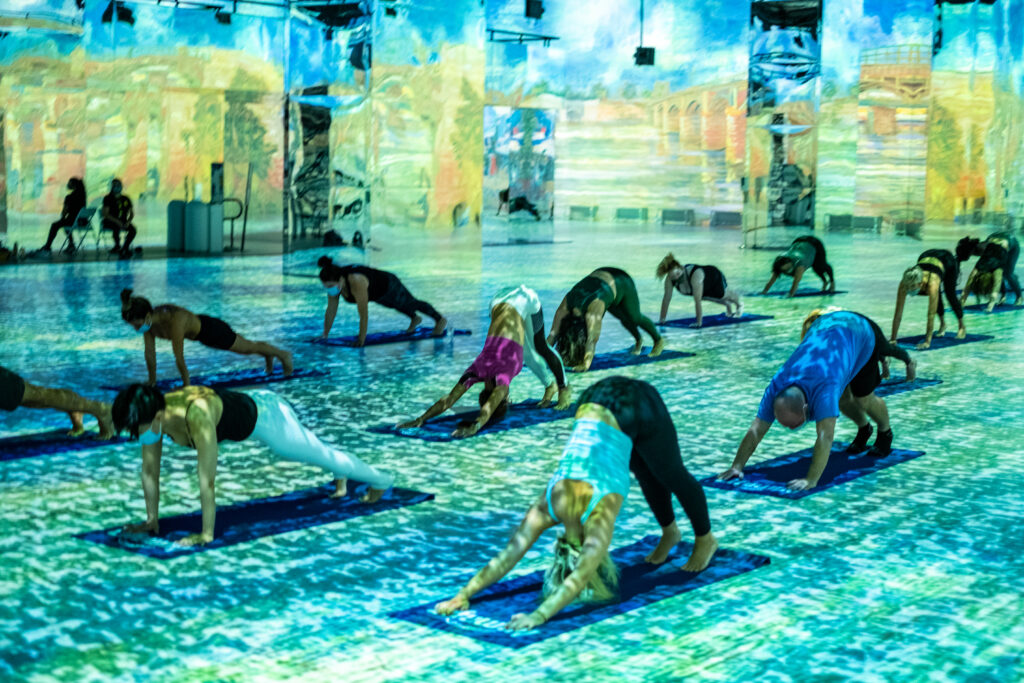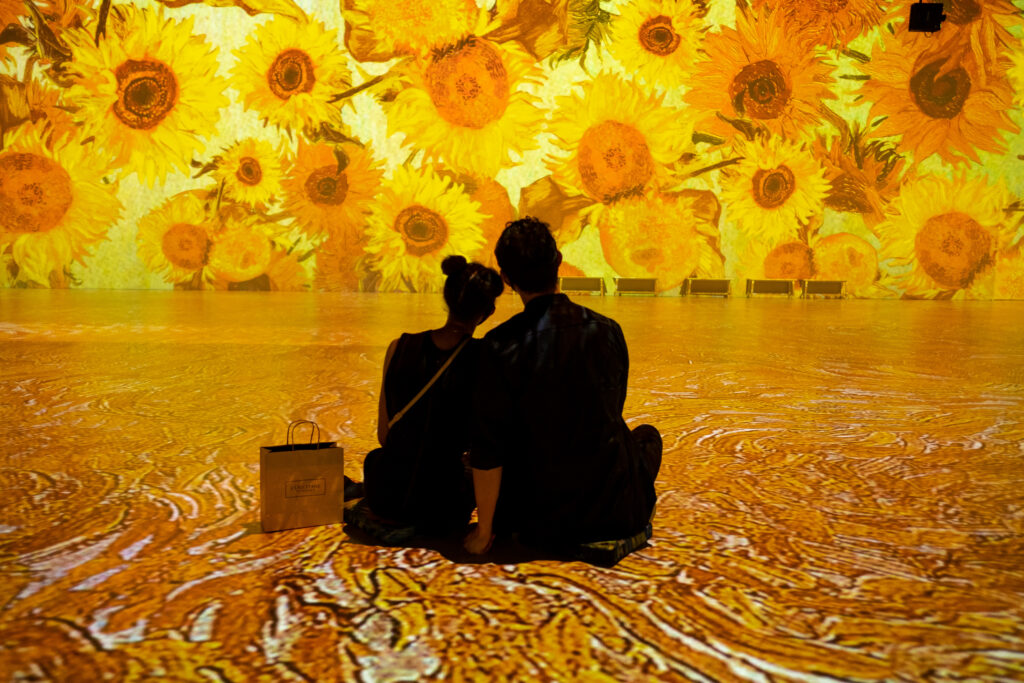Summer in the City with Van Gogh: An Immersive Experience That Leaves the Learning Up to You

Time Out New York recently called it, and they aren’t wrong: it’s the summer of Van Gogh. It’s hard to miss that Manhattan currently has not one, but two competitive interactive art installations that are all about our favorite Starry Night creator. If you can get past the confusion of “Immersive Van Gogh” versus “Van Gogh: The Immersive Experience,” take the ferry to Pier 36 to see “Immersive Van Gogh” and skip “Van Gogh: The Immersive Experience” entirely. However, my advice comes with an extreme caveat: if you’re thinking of heading over to Pier 36 to see “Immersive Van Gogh” to learn more about the artist and his life, you are going to be greatly disappointed. There is no narration whatsoever, and the few facts that are given—specifically, that he painted 36 self-portraits but that only two photographs of him exist—are up on the wall of a dark corridor that leads you into another extremely dark passageway and then into the two spaces, one smaller and the other cavernous, that are the exhibit itself.
In fact, the less you know about Van Gogh and his paintings, the more this will be like a fancy light show. But if you know the arc of Vincent’s short life and are a fan of his work, the immersion with 500,000 cubic feet of projections, 60,600 frames of video and 900,000,000 pixels is a sophisticated, sometimes dazzling, and moving piece of confection.

The first smaller room has mirrored objects—spheres and panels—that reflect the images on the walls, while the second shows the images on the walls, the ceiling, and floors, so that the “immersive” quality is different in each space. Both rooms are in sync so you can move between them if you wish. But the paintings and their presentation also determine how the viewer is affected. The painting Van Gogh thought would establish him as a real artist, The Potato Eaters—which on the walls of the Van Gogh Museum is slightly less than 3 feet by four and very dark—envelopes you with its yellow-brown dreariness and its harsh depiction of Dutch peasants. That’s very different from the sunflowers and irises that begin with painterly details (the thick lay down of Van Gogh’s brushstrokes are evident) and surround you with joy and bursting energy.

The show is structured chronologically and the key moments in the painter’s short life are celebrated through the work; the incredible impact of discovering Japanese woodblock prints is noted with a glorious display of the paintings that mark its influence on Van Gogh and ends with his wonderful painting of a tree in blossom, ending with the blossoms floating out into the sky

Strictly down to business art editors have complained about how the animation destroys the work and this isn’t really an art exhibition. I still have Jason Farago’s quippy comment ringing in my ears, “Like Vincent, I too suffer for my art, and so I attended both of them.” Back-to-back immersive exhibitions (out of the two, “Immersive Van Gogh” is the very clear winner) might also push me over the edge, but let’s get real, shall we? It’s not just fun watching familiar details float up to make the whole but sometimes it’s brilliant as in the visual construction of The Bedroom at Arles which begins with a black-and-white stool and then fills in the details until you are looking at the whole in its familiar color glory! Ditto the guessing game when details float up and you are wondering “Is it the Olive Trees?” or you watch and wait for the stars which announce the arrival of Starry Night.

There is music throughout to prime your reactions but the presentation is powerful in ways that are unexpected. The portraits show up in a group and you think “there’s the postman,” “L’Arlésienne,’ or “Dr. Gachet” and it’s like old friends popping up to visit. The paintings of the asylum are sobering and then when the turbulence of what is going on in Van Gogh’s mind is fully revealed in Wheatfield with Crows—thought to be his last painting– and the crows fly out toward you, you catch your breath, knowing the end that is coming.
It’s hard to counter Farago’s point that there are real-life Van Gogh paintings to be seen in New York City, but if you are an extreme Van Gogh buff (like myself) who has seen countless paintings in person, give “Immersive Van Gogh” a shot.
“Immersive Van Gogh” is on view through Sept. 6, Pier 36, 299 South Street.
You Might Like
Rachel Rossin’s Virtual World: How the Invisible Infrastructure of Technology Helps to Parse Reality
What's Your Reaction?
Alexandra Israel graduated from Bates College in 2010. A museum aficionado since her introduction to Jean Dominque Ingres' portraits as a small child, she enjoys spending her free time at museums and finding off-the-beaten-track gallery shows. Israel has been working in PR for over seven years, primarily within book publishing and in the art world. She has held positions at Penguin Book Group, Aperture Foundation, and Third Eye among others. l Instagram l


